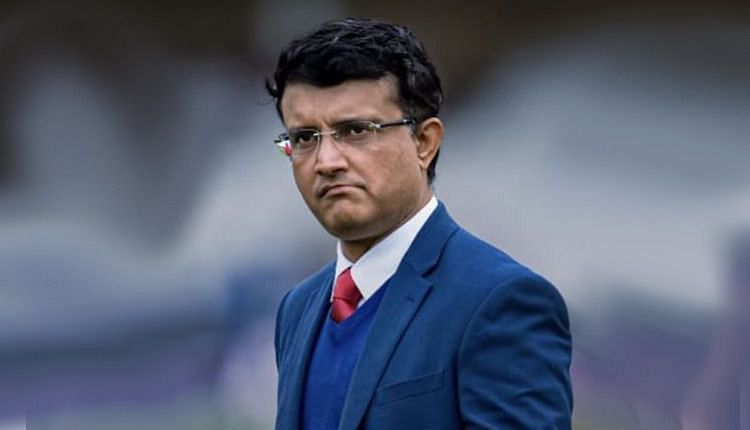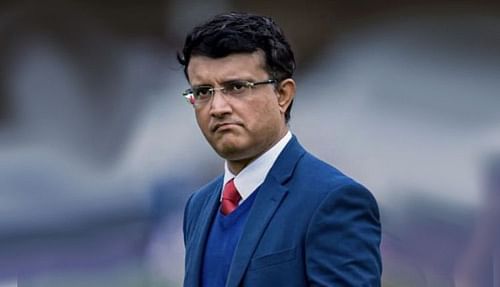
Mishandling of the Sharmas casts scrutiny on Sourav Ganguly, the leader

In a controversial September essay, Kartikeya Date put down his long-standing theories about Sourav Ganguly and 'leadership' in a substack blog-post. The response was so splitting that he had to author a spinoff article in support of it, galumphing to adjacent concepts to support his stance.
Ganguly's fame, stardom and dizzying popularity in the public eye, Date argued, had rendered facts moot. And like often happens in cultures defined by personality cults - such as the Indian cricketing culture - that becomes breeding ground for misinformation.
Some of Date's concluding verses are worth quoting here:
"If you still hold that in cricket, there are intangibles which are self-evidently significant even though their effect does not appear anywhere in the record, then you are immune to empirical evidence.
"But if you believe, like I and almost every other cricket fan I know do, that cricket is a game of batting and bowling in which balls are bowled and faced, and runs are scored and wickets are taken, and players who are better at this than others are better players, and teams which are better at this than others are better teams, then, given the evidence, one cannot help but wonder about the basis of these claims about leadership and belief which are made on behalf of Sourav Ganguly."
Let 'leadership' wait, for now. Let the patronization endure, unhindered.
In the local television ad Ganguly refers to himself as 'champion', in one of the most cringeworthy displays of loftiness one could conceive. Like obsequious cronies, Deep Dasgupta and others simper in the background.
In a 2019 Atletico de Kolkata ad (the football team he co-owns), Ganguly ordains the team Dada, bestowing his professed monicker on the team that he has to accentuate is no smaller than himself.
The ads are scripted, but they manifest the dark subway of stardom that envelopes its victims in a vulnerable bubble. Ganguly is one. It is not Ganguly the player; it is Ganguly the person, and the outcomes of the false beings that he is projected to be.
It is not new of Indian cricket to not give a monkey's a** about its followers. Economists have long postulated an inverse relationship between popularity and the extent of marketing, citing that when the former reaches its peak, the need to advertise approaches zero.
Alternatively, as the sole producers and suppliers of cricket in the country, the BCCI is a monopolistic firm. Since demand for the game remains ever-so constant, concerns about marketing do not surface.
Perhaps, had it not been for their need to control the narratives coming out of bubble-life in the recently concluded IPL edition, the social media handles of the board would recently not have been alight with insider accounts.
On a rare day when the captain of an Indian team lost so much temper that he lashed out at the administrators, the administration once again comes to question. It is useful to consider a quick recap of happenings at this point.
To send Rohit Sharma to the NCA, in which case he will have to undergo a full quarantine in Australia as he left the UAE bubble, the BCCI must have been convinced of his recovery by at least a month before the first Test. Also consider that so was the pattern that emerged to follow Wriddhiman Saha's hamstring strains. If both Sharmas - Rohit and Ishant - didn't, it depicts in the first place a major failure on the physiotherapy department's part.
Then, under the public scanner, so many theories have floated around that it is ungainly to trust any. Reports have emerged that their rates of recovery were slow. Another pointed out to Sharma's ailing father, and the call of personal duty. This still remains dodgy: why would such information, that is neither defamatory nor damaging, need to be concealed from either the team's or the public eye?
Considering the BCCI's obvious wont to cover up this scafu, it is not offhand to assume that this is boohockey.
All of this points to only two possibilities: these are either flagrant fabrications, or there is so much lack of communication within the cricketing structure that personalised theories are free to propagate.
And, to appreciate that the structure is made up of individuals, and therefore its culture is the sum total of the personalities of those individuals, it is essential to understand the person who pulls its strings, rocks its cradle.
Ganguly, unlike other organisers, has spent the majority of his life gallivanting at the top of the ladder, and quite obviously feels titillated by it.
His book, A Century Is Not Enough — aptly named in accordance with the general narrative — is a crucial study point. While the back cover labels him 'the man who changed the shape and face of Indian cricket', 'warrior', 'Maharaj' and 'hero' are some of the third-person references Ganguly makes to himself.
An entire section is dedicated to study of 'Becoming a Leader'.
A full chapter he spends advocating the disbandment of Lord's 2002 from public memory, although ironically naming it 'Waving the Shirt at Lord's'. What does not change, reinforces. Another is 'Life with Shah Rukh'; another, 'Mera Naam Sourav Ganguly. Bhule Toh Nahin?'
The delusion tags along in real life. In his second avatar as BCCI bossman, Ganguly has constantly offered questionable information to the press, in part evidencing the poor communication systemic of the board and in part, his hunger for control. The latest — before he was 'confident' of the Sharmas getting fit well ahead of the Test series, that is — was that a weekday final would not affect viewership values for the IPL.
The entitlement is apparent: Ganguly believes that the Indian fan would forego all concerns for a night of prime-time IPL. And perhaps, like it was with negotiating quarantine periods with Australia and the Rohit-Ishant mystery, there might have been little communication between the stakeholders.
In reality, the viewership figures for the final were never publicised, so we will never know. Nor were the discrepancies contributed by the naturally increased sample space of audience resulting from the lockdown, or the broadcasters' addition of regional languages, weighed in before the drumrolls set in. Whether the adjusted change in overall viewership is positive or negative we cannot tell.
Ganguly subscribes so much to the public conception of himself that it is today part of him. Maybe, with the validation that came alongside being a top India cricketer, the coy young Bengali at some point felt liberated to do so.
If the nature of administration runs parallely with Ganguly the individual, and his persona has been so deeply impacted by the rampant narratives around him, the only logical conclusion that can be reached at is that Indian cricket's extravagant mythologies are part of the reason why it fails to achieve its full potential.
In Ganguly's case its influence is damning.
Lest we miss it, popular portrayals are changing too. After Ramachandra Guha wrote what he did about the ex-Indian captain, it is absurd to think of him anymore as the all-powerful Napolean. Nor is it about Ganguly alone. The preening personality cults that outline Indian cricketing folklore are as damaging as disgraceful.
Among the delusions that Date's arguments failed to bust (partly because they were met with the fanboy's wrath, partly because it was not the author's priority) was the all-encompassing saga that Ganguly was the ultimate man-manager, the Trojan goddess of empathy and understanding.
However, little do we know to substantiate this claim, and on the contrary lots against it. Ganguly was aggressive, angry and a mirror of present-day Virat Kohli — not the outlier as he is often depicted but the epitome of the atypical Indian man. He may have done more to consolidate flawed concepts about manhod permeating the country than remould it.
And what fearful reverence of the student-teacher kind can do to individuals, we might as well not talk about. It leads them inadvertently into the gory cave of mistrusting themselves, and makes them self-pitying caterpillars on covert scales, beneath all the braggadocio, blinded by veneration. At least the plainest point of convergence between Ganguly and Kohli's regimes, their abysmal records in knockout matches, ought us to know.
This article does not merely intend to cut into Ganguly, the blood-stained hero. The greater aim of it is to use Ganguly as a tool, an allegory of cricketers to posit how the false yet mystical narratives that we douse are cricketers and subsequently cricket in prove to be so harmful that it taints cricket culture, and the individual.
Ganguly is only a manifestation, one that lies at the high end of the road.
It is high time we abandoned the traditionalistic notions of what Sourav Ganguly was, because besides doing disservice to the batsman, it degrades cricketing culture. It is responsible for a false institution in which we attribute every fall of the leaf to leadership, nesciently failing to identify that the process and the result are incongruent entities. If nothing else, let the mishandling of Rohit and Ishant Sharma prompt that.
Sometimes, when in real life we berate the young child who has just injured his knee, ("Maine bola tha, bhaago mat, bhaago mat!") I cannot help but wonder how much of it is influenced by sporting parlance.